The Pakistan-Arabia Dust Cloud
and the
Cyclone Gonu battle..and Gonu loses.
A CLOSER LOOK.
See the two other GONU battle
page here and HERE
Plus the impact of the Dust
Cloud on Pakistan floods
By Craig Dremann text Copyright © 2013
Box 361, Redwood City, CA 94064
(650) 325-7333 -
email
The annual Pakistan-Arabia Dust Cloud is a man-made
weather event created the soil getting airborne during the monsoon
season by allowing the native vegetation to be eaten away by domesticated
animals and eliminated by plowing. The Dust Cloud has been a part
of the lives of the peoples of the area for a couple of hundred
generations, for about 5,500 years, about the time of the invention
of plowed agriculture and the domestication of grazing animals.
The massive power of the Dust Cloud can clearly
be seen, when confronted with the apparently weaker power of a
Category-5 cyclone GONU in June 2007. The Dust Cloud was able
to confine the cyclone in the Straits of Hormuz and then the Dust
Cloud quickly robs the cyclone's power until it was no more. You
can see on the image for June 6 at 6:00Z that the Dust Cloud rips
the cyclone into two, as easily as breaking a dry cracker.
I am proposing that these man-made Dust Cloud that
hover each year over parts of the planet, like the Pakistan-Arabia,
Saharan, Gobi Desert Dust Clouds, are the most powerful weather
events, that are in themselves causing floods and droughts for
billions of people each year. The droughts occur when the Dust
Clouds are in the area, and the floods occur, when the Cloud blocks
of stall the rainfall at its leading edge.
At least for the Indonesia-India monsoon moisture
track that follows across India, Pakistan, Arabia, the Horn of
Africa, central Africa, the Atlantic Ocean, the Americas, etc.,
including the Dust Cloud effects into future weather models, may
help give a few hours or days advanced warning of floods in India
and Pakistan.
Daily tracking of the Dust Cloud may be useful for
predicting long term drought for India and Pakistan form example,
and the effects of the Cloud can clearly be seen if you notice
that the Dust Cloud has parked itself over parts of those countries.
Additionally, Pakistan has been experiencing annual
massive floods, which are the direct result of the Dust Cloud
retreating and forming a clear pocket, that traps and stalls the
monsoon in that location.
Since the Dust Clouds are man-made, that means that
we have a choice to not be at the mercy of the Dust Clouds, and
to start managing the lands so that the Dust Clouds do not form
in the first place.
My suggestion is since the lands where the Dust
Clouds originate are already marginal for human use, that they
be set aside as Ecological Restoration Preserves, and allow the
local native vegetation to recover the soil, so that it stops
getting airborne.
The costs of Ecological Restoration could be paid
for with carbon offsets. The process of eliminating the Dust Clouds
could be helped by the wealthier countries of the world offering
carbon offset credit money, to pay for the revegetation of these
areas using the local perennial desert grasses and desert wildflowers.
And those native grasses and wildflowers instead of becoming animal
fodder each year, might be more valuable for putting carbon into
the soil, and keep the soil on the ground instead of getting into
the air.
 Images from SSEC
at the University of Wisconsin, and colors approximately relate
to temperatures, and this image is called an IR HNC curve enhancement.
Images from SSEC
at the University of Wisconsin, and colors approximately relate
to temperatures, and this image is called an IR HNC curve enhancement.


Images of the Dust Cloud are from NAAPS Monterey Aerosol Modeling.
The worst case scenarios for either India or Pakistan, is when
a north-south wall forms in the leading eastern edge of the Dust
Cloud, or when a pocket form, trapping the monsoonal moisture
and causing floods.
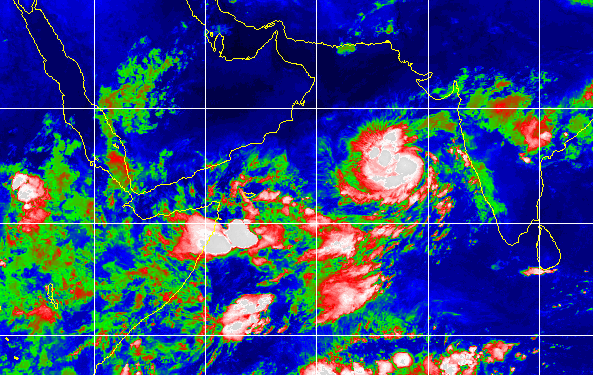
June 2, 2007 00:00Z
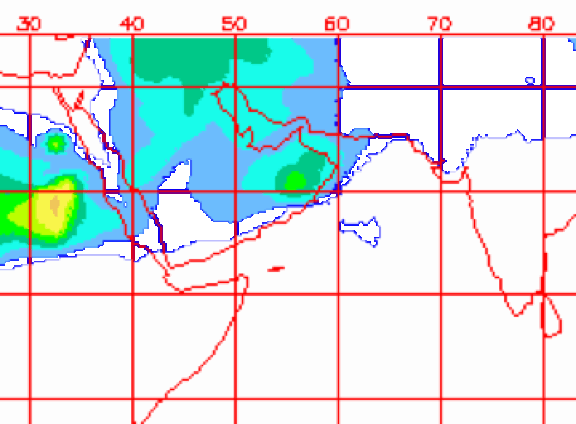 Dust - June 2, 2007 00:00Z
Dust - June 2, 2007 00:00Z
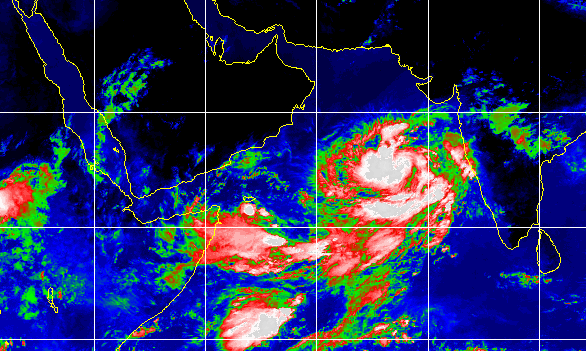
June 2, 2007 6:00Z
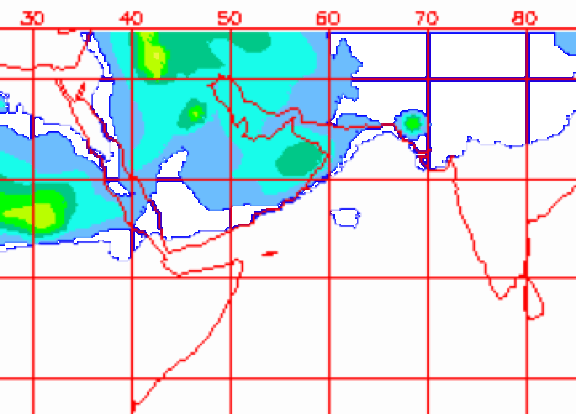 Dust - June 2, 2007 6:00Z
Dust - June 2, 2007 6:00Z
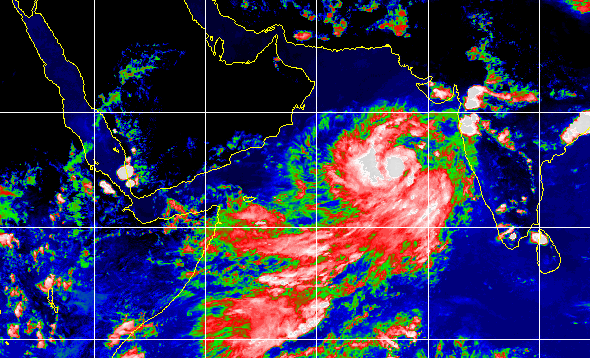 June 2, 2007 12:00Z
June 2, 2007 12:00Z
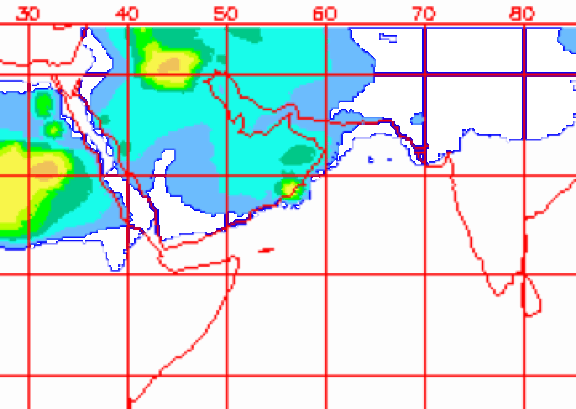 Dust June 2, 2007 12:00Z
Dust June 2, 2007 12:00Z
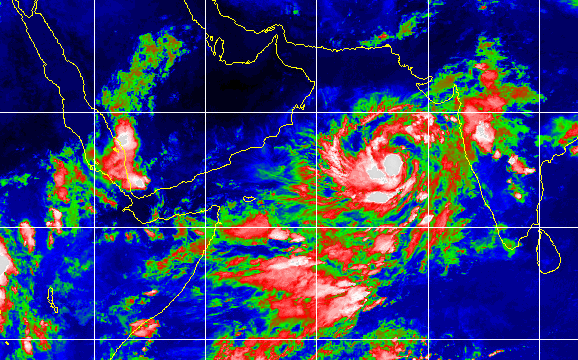 June 2, 2007 18:00Z
June 2, 2007 18:00Z
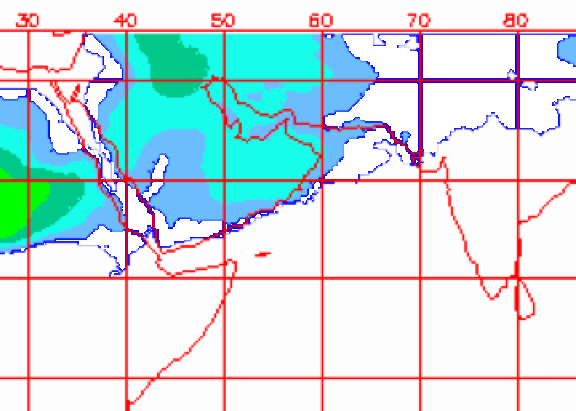 Dust June 2, 2007 18:00Z
Dust June 2, 2007 18:00Z
 June 3, 2007 00:00Z
June 3, 2007 00:00Z
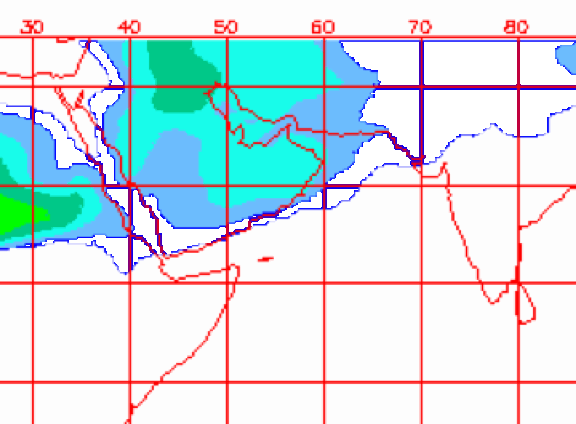 Dust June 3, 2007 00:00Z
Dust June 3, 2007 00:00Z
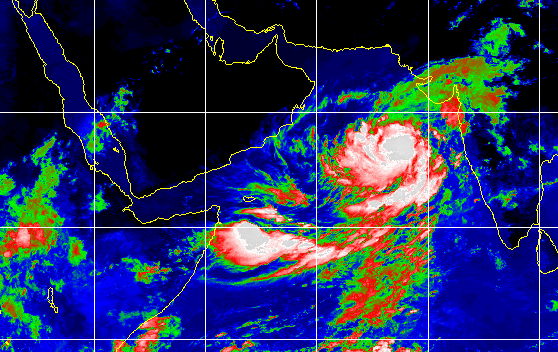
June 3, 2007 6:00Z
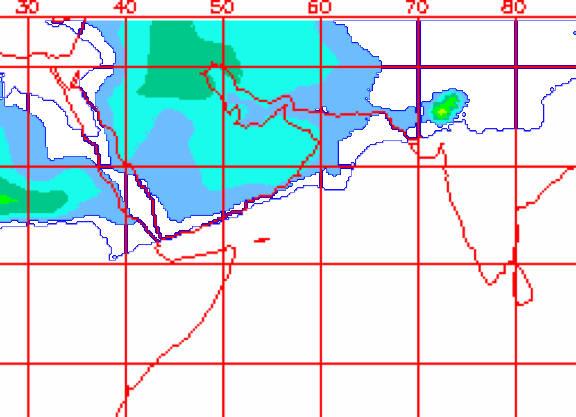
Dust June 3, 2007 06:00Z
 June 3, 2007 12:00Z
June 3, 2007 12:00Z
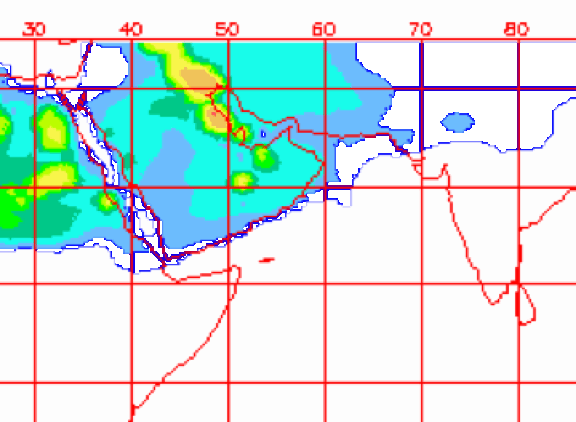 Dust June 3, 2007 12:00Z
Dust June 3, 2007 12:00Z
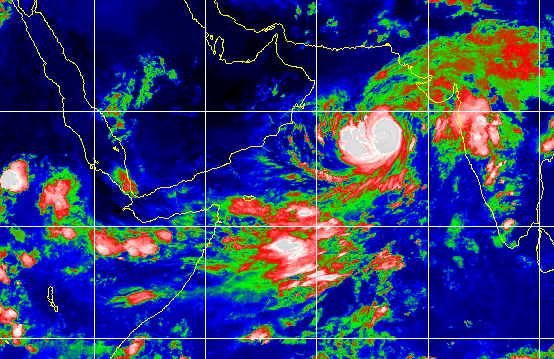 June 3, 2007 18:00Z
June 3, 2007 18:00Z
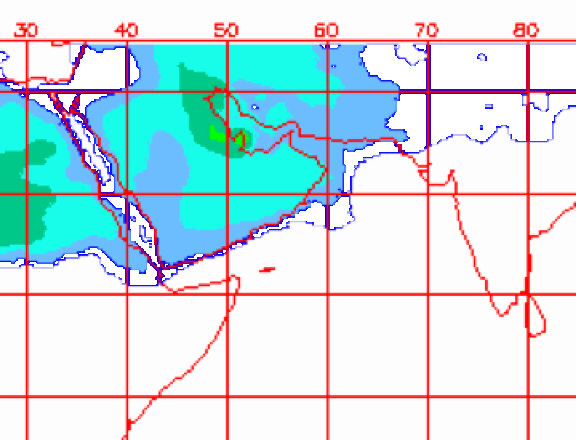 Dust June 3, 2007 18:00Z
Dust June 3, 2007 18:00Z
 June 4, 2007 00:00Z
June 4, 2007 00:00Z
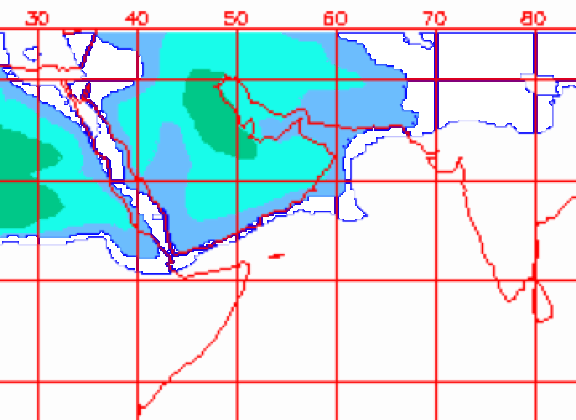 Dust June 4, 2007 00:00Z
Dust June 4, 2007 00:00Z
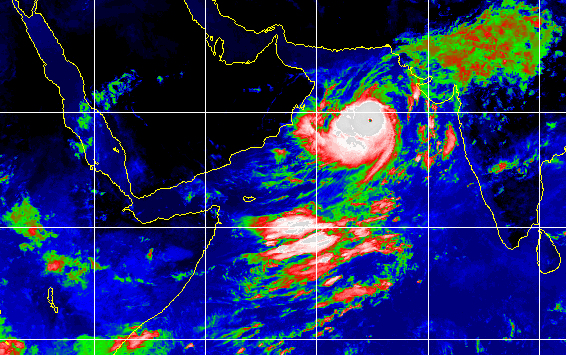 June 4, 2007 06:00Z
June 4, 2007 06:00Z
 Dust June 4, 2007 06:00Z
Dust June 4, 2007 06:00Z
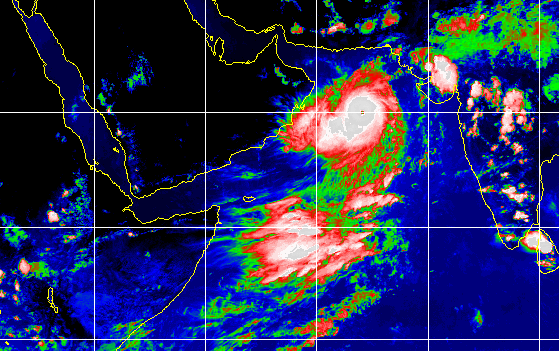 June 4, 2007 12:00Z
June 4, 2007 12:00Z
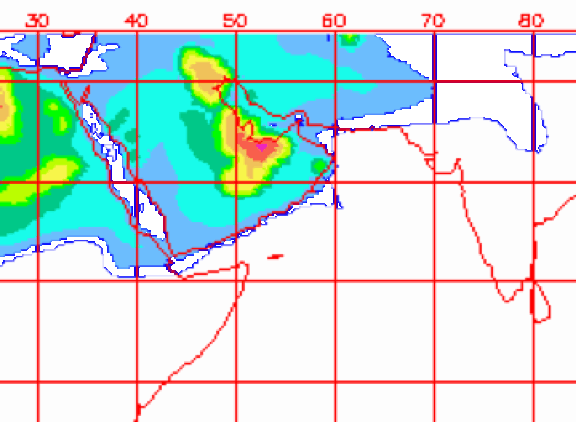 Dust June 4, 2007 12:00Z
Dust June 4, 2007 12:00Z
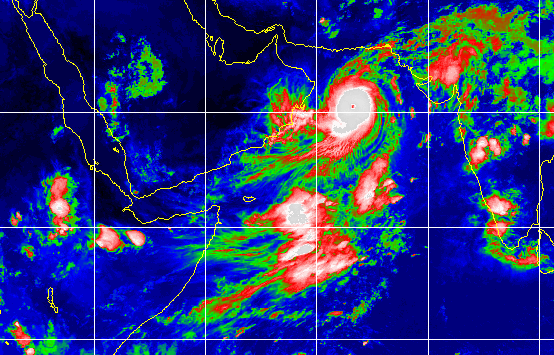 June 4, 2007 18:00Z
June 4, 2007 18:00Z
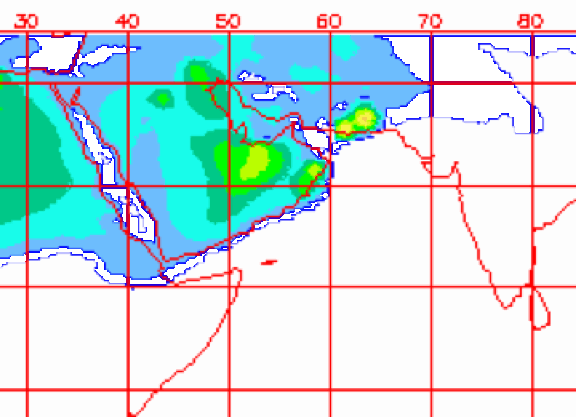 Dust June 4, 2007 18:00Z
Dust June 4, 2007 18:00Z
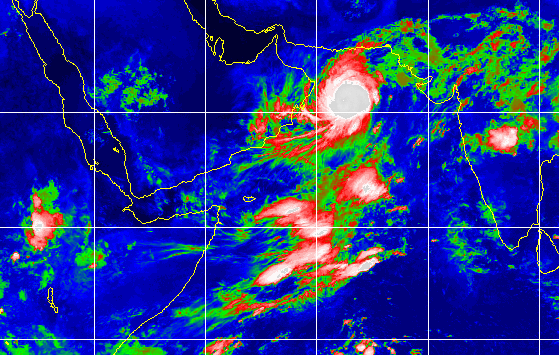 June 5, 2007 00:00Z
June 5, 2007 00:00Z
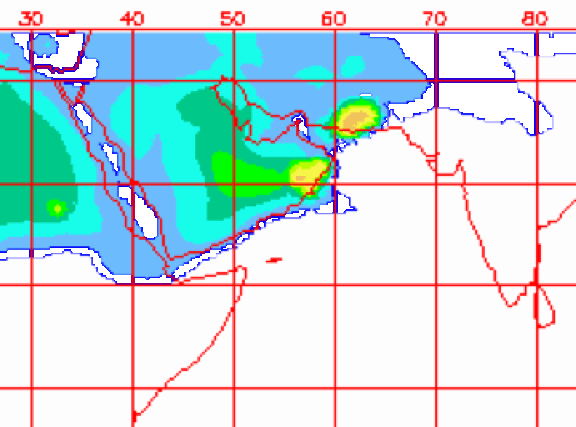 Dust June 5, 2007 00:00Z
Dust June 5, 2007 00:00Z
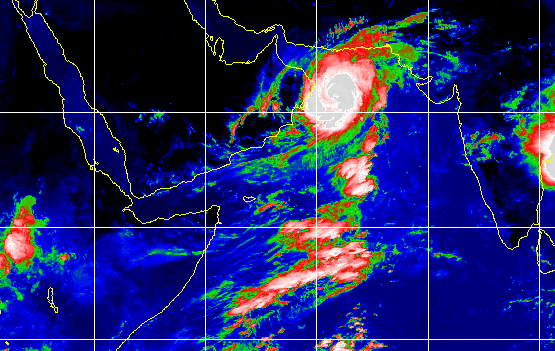 June 5, 2007 06:00Z
June 5, 2007 06:00Z
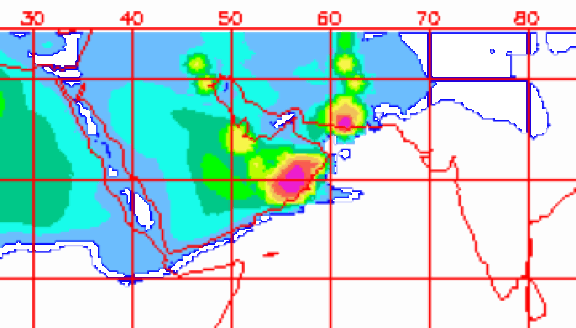 Dust June 5, 2007 06:00Z
Dust June 5, 2007 06:00Z
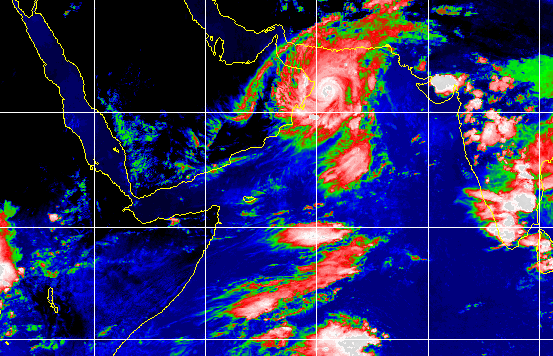
June 5, 2007 12:00Z
 Dust June 5, 2007 12:00Z
Dust June 5, 2007 12:00Z
 June 5,
2007 18:00Z
June 5,
2007 18:00Z
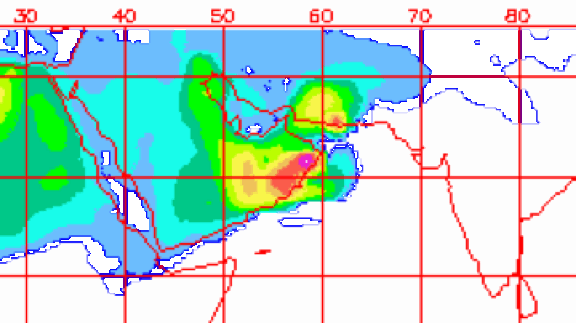 Dust June 5, 2007 18:00Z
Dust June 5, 2007 18:00Z
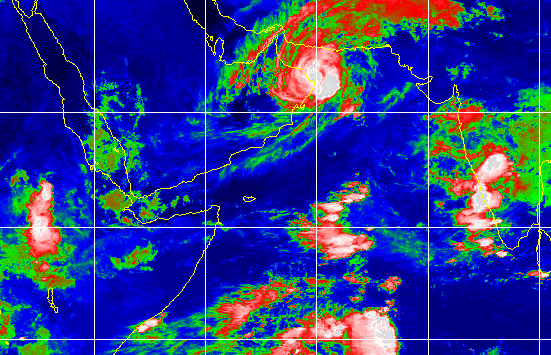 June 6, 2007 00:00Z
June 6, 2007 00:00Z
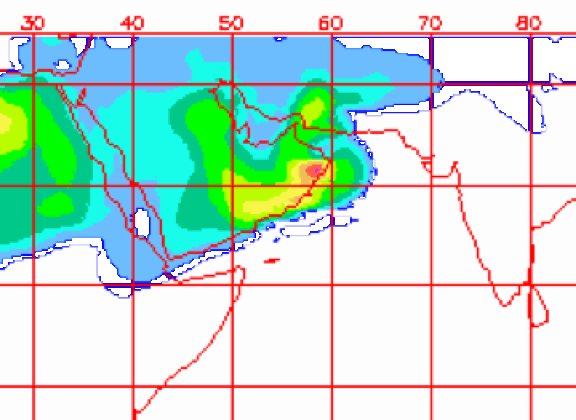 Dust June 6, 2007 00:00Z
Dust June 6, 2007 00:00Z
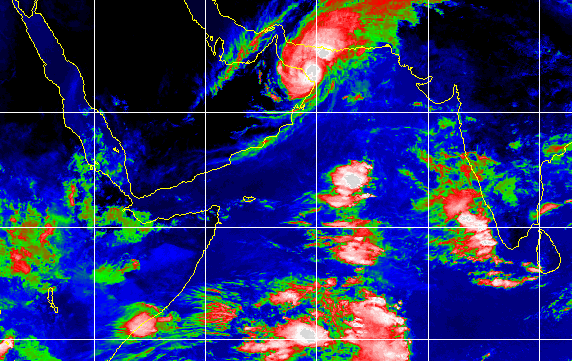 June 6, 2007 06:00Z
June 6, 2007 06:00Z
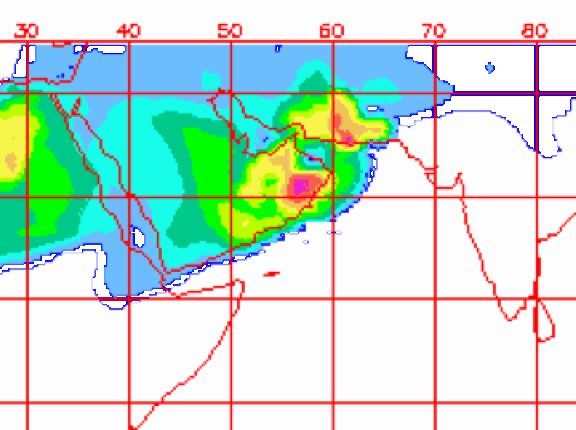 Dust June 6, 2007 06:00Z
Dust June 6, 2007 06:00Z
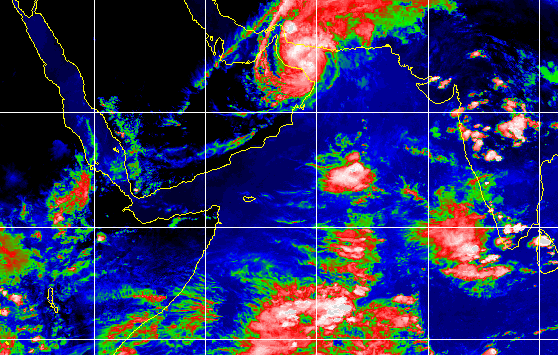 June 6, 2007 12:00Z
June 6, 2007 12:00Z
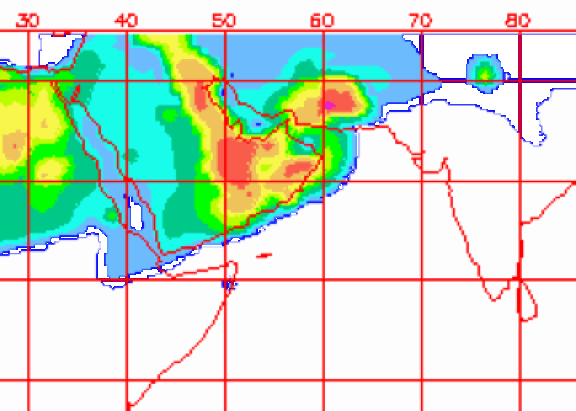 Dust June 6, 2007 12:00Z
Dust June 6, 2007 12:00Z
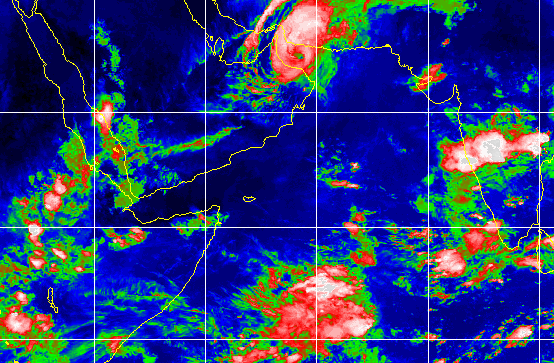 June 6, 2007 18:00Z
June 6, 2007 18:00Z
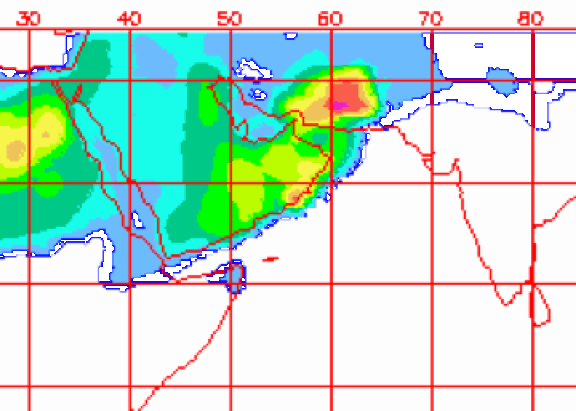 Dust June 6, 2007 18:00Z
Dust June 6, 2007 18:00Z
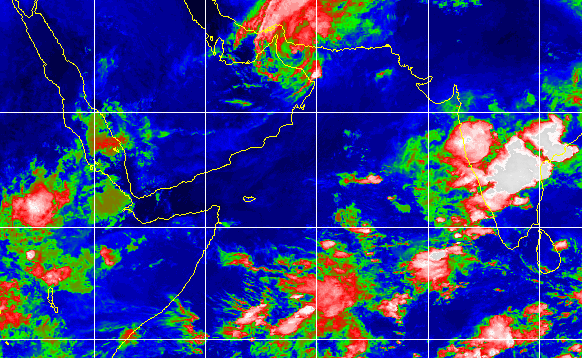 June 7, 2007 00:00Z
June 7, 2007 00:00Z
 Dust June 7, 2007 00:00Z
Dust June 7, 2007 00:00Z
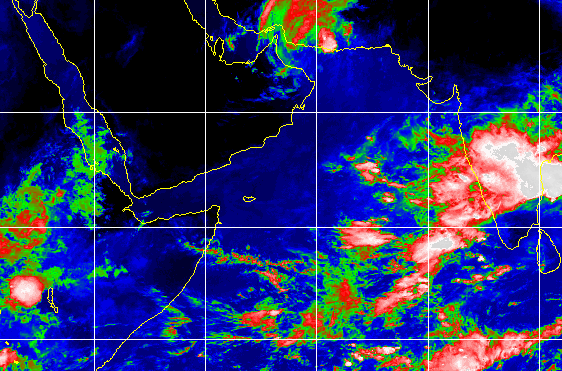 June 7, 2007 06:00Z
June 7, 2007 06:00Z
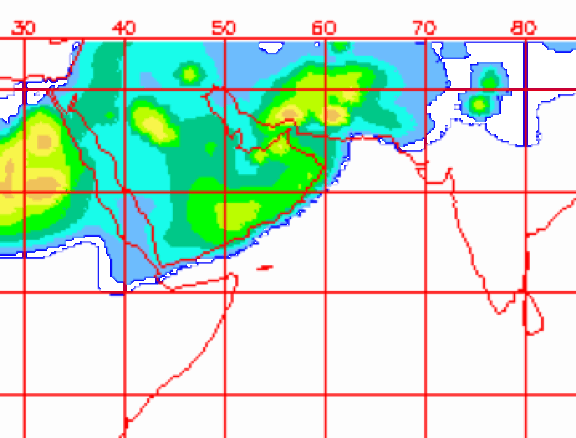 Dust June 7, 2007 06:00Z
Dust June 7, 2007 06:00Z
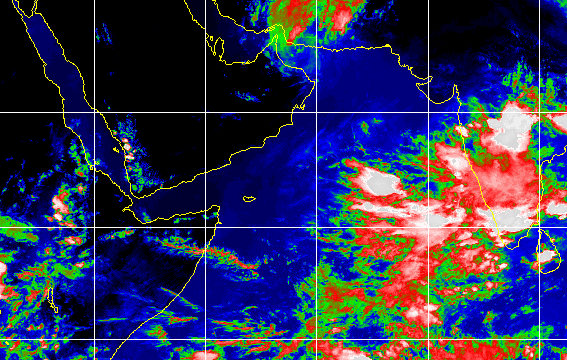 June 7, 2007 12:00Z
June 7, 2007 12:00Z
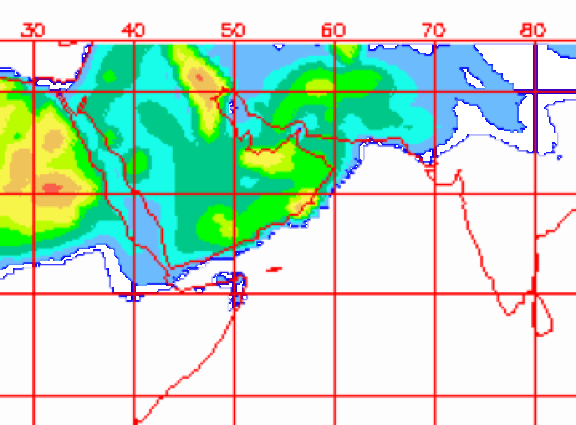 Dust June 7, 2007 12:00Z
Dust June 7, 2007 12:00Z
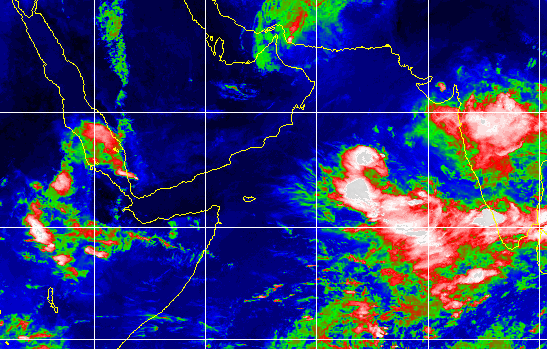 June 7, 2007 18:00Z
June 7, 2007 18:00Z
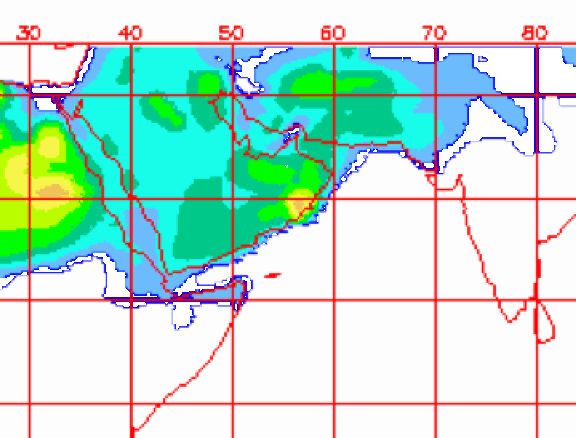 Dust June 7, 2007 18:00Z
Dust June 7, 2007 18:00Z
Updated December 24, 2022 - The
Reveg Edge Ecological Restoration service
 Images from SSEC
at the University of Wisconsin, and colors approximately relate
to temperatures, and this image is called an IR HNC curve enhancement.
Images from SSEC
at the University of Wisconsin, and colors approximately relate
to temperatures, and this image is called an IR HNC curve enhancement. Images from SSEC
at the University of Wisconsin, and colors approximately relate
to temperatures, and this image is called an IR HNC curve enhancement.
Images from SSEC
at the University of Wisconsin, and colors approximately relate
to temperatures, and this image is called an IR HNC curve enhancement.
 June 6, 2007 06:00Z
June 6, 2007 06:00Z June 7, 2007 00:00Z
June 7, 2007 00:00Z